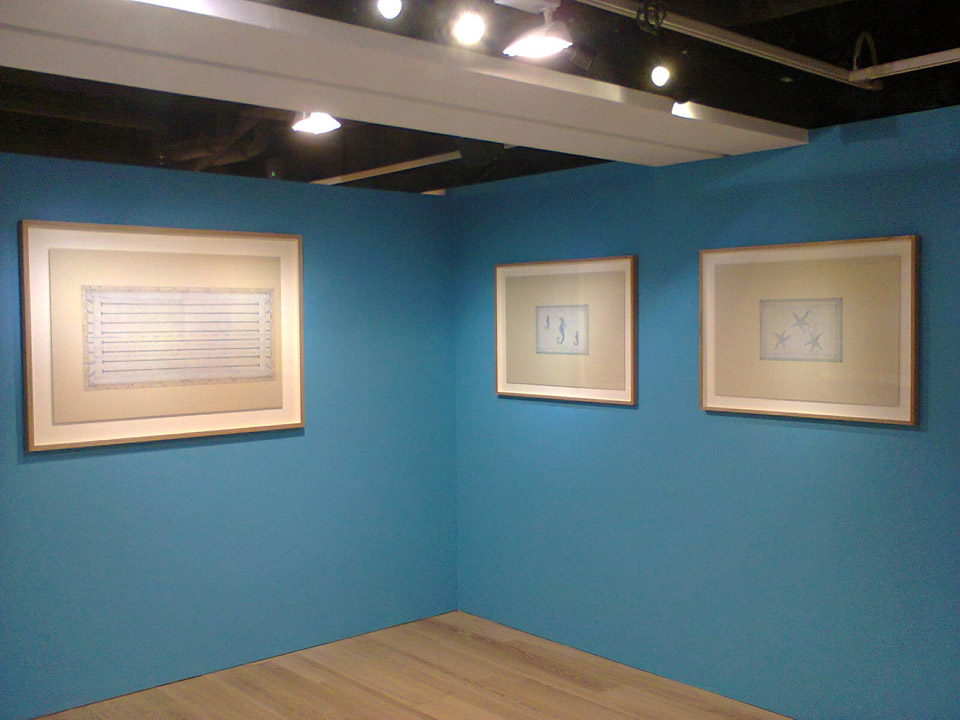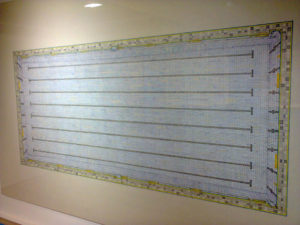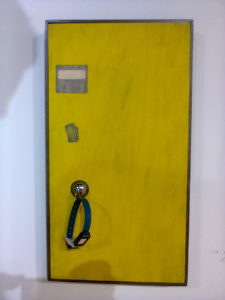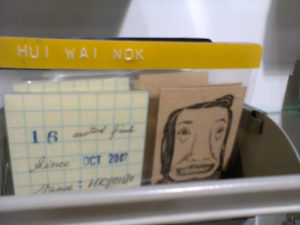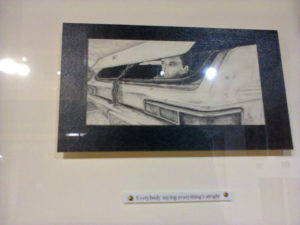Hong Kong, August 12 – September 8, 2016, 8F New World Tower II, Central (Curator: Vivian Poon)
Dirty Paper is a Hong Kong art collective consisting of Chan Wai Lap and Yau Kwok Keung. The artworks has a youthful and relaxed feel: A human anatomy class drawings reminding of the biology class where the teacher for the first time explains the difference between the male and female body using a scientific vocabulary, a catalogue of friends with hand-drawn portraits, a number of swimming-themed drawings and sculptures. All resonating with the summer time when the exhibition took place.
Everything was neatly installed within a clean converted office space. The artists even provided a soundtrack, consisting of cheerful pop songs fitting with the youthful atmosphere of the exhibition. So far so good. Yet beyond all the youthful cheerfulness, I felt an emptiness similar to the one felt when passing through the endless malls and shopping arcades of Hong Kong. Like well-designed products, the artworks did evoke feelings and the exhibition did create an experience. One could be reminded of one’s youth, the leisurely off-school time, having a first date in a cinema and spying on the girl/boy one liked on Facebook. The artworks succeeded in this. But the kind of feelings evoked, their youthful naivety also brought them very close to a youth-oriented fashion brand: no complicated feelings, just joy and warm memories of happy moments.
The kind of works on display very much reminded me of the “A Hong Kong Everyday” show at Karin Weber. Everything written about that show would apply here too. Similarly to the Brainrental collective, I would not be surprised if Dirty Paper developed their artworks into a product line of stationery, t-shirts or a series of backpacks. It sits on the edge between art and design-craft, which is not a crime, but it made me notice the lack of a critical reflection substituted by a clinging onto happy memories. It is hard to say to which extent this is a conviction and to which extent this is a survival strategy resulting from commerce and consumption-centered lifestyle in Hong Kong.
The swimming pool drawings were the largest works in the show, and they looked the most “serious” by themselves. Here I realized another typical trait of Dirty Paper’s work, which was a strong urge, almost obsession towards categorization and small-scale precision: Drawing every swimming pool tile, drawing a miniature portrait of each friend and organizing them into files, etc. Traces of the same obsession were also present in Brainrental and Elvis Yip Kin Bon’s work at Karin Weber and it seems to be a direct influence of the compartmentalized Hong Kong environment where living often takes place in 2 cubic meter units and thinking often takes place in spreadsheets and administrative directives present in the form of ubiquitous notices and announcements of restrictions. The result is an over-emphasis on small detail, an obsession with arranging and organizing things within the rigid structures one moves about. Even the escapist tendency can be traced back to here. Seen from this perspective, the swimming pools, originally selected as a motive representing a location of happy memories received a slightly nightmarish tint: In an attempt to grasp the essence of the swimming pool, to represent it as precisely as possible, up to the individual tile, it in a way disappeared into itself. It started to resemble a technical drawing, a model of itself devoid of any life or memory. It became an abstract pattern.
To elaborate further on the swimming pools, one should notice that Dirty Paper’s swimming pool drawings depict large public swimming pools. This is different from the pool depicted by Elvis Yip Kin Bon, which is a smaller private pool: the fact that it is leaking puts it in an active mode, and it also playfully undermines the primary connotation of luxurious leisure with the imperfect implications of our flawed reality. Dirty Paper’s pools do not contain this sense of activity. There is no water. The tiling is perfect. The longing, present in the title “I wish I was swimming”, is absent from the image, which depicts a tile-by-tile view of a pool devoid of water. The wish remains unrealized. If there is any life, any memory, it is hidden somewhere beyond and behind the grid-like, well maintained (shown by the patchy color of replacement tiles), yet monotonous structure drawn out by a living hand with meticulous precision. Maybe this rift represents process of growing up, where life takes it course while our memories lag behind. We try to hold onto them by attaching them to objects, only to see the objects themselves take over, decay and fall apart.
